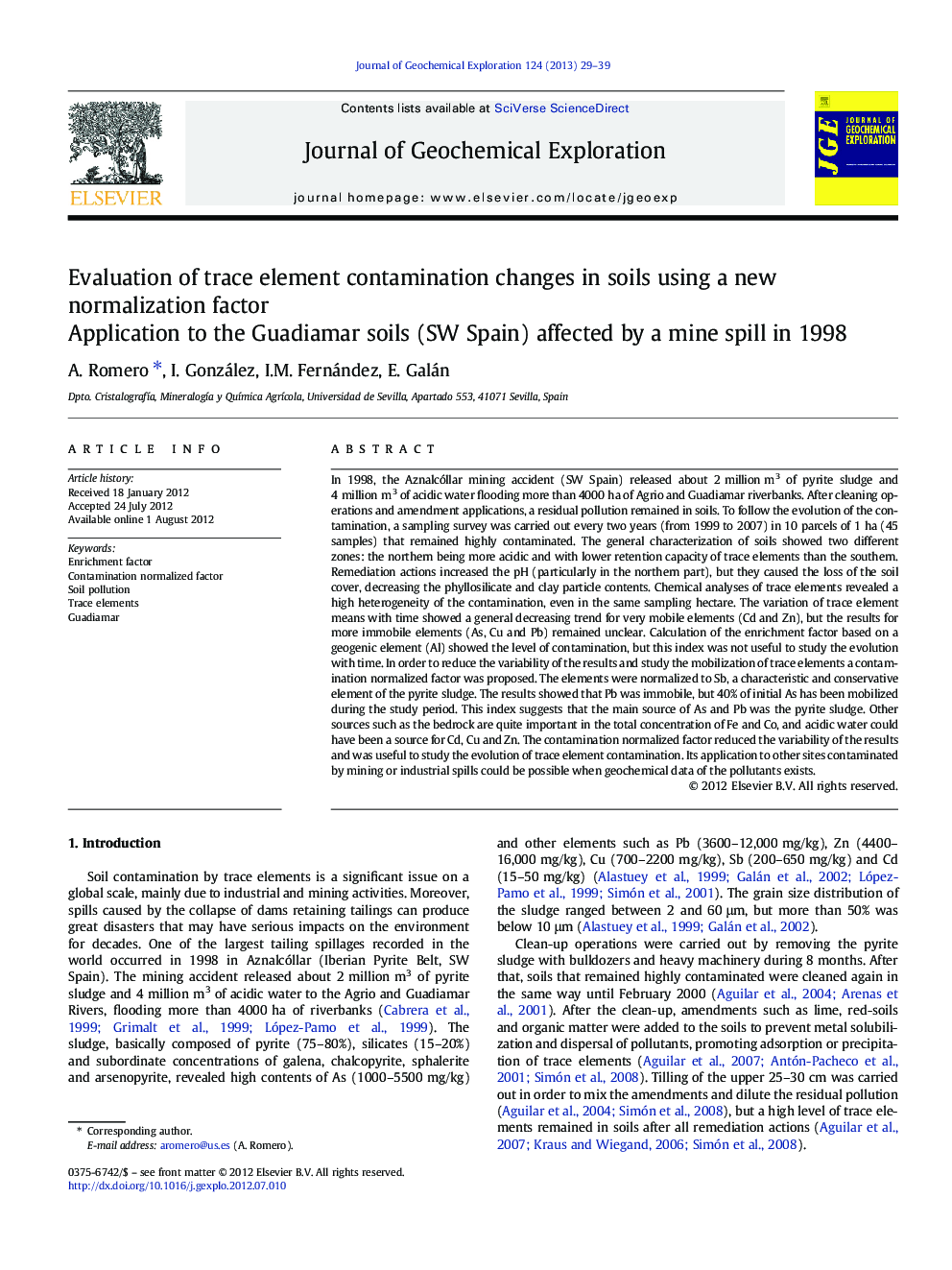| Article ID | Journal | Published Year | Pages | File Type |
|---|---|---|---|---|
| 4457679 | Journal of Geochemical Exploration | 2013 | 11 Pages |
In 1998, the Aznalcóllar mining accident (SW Spain) released about 2 million m3 of pyrite sludge and 4 million m3 of acidic water flooding more than 4000 ha of Agrio and Guadiamar riverbanks. After cleaning operations and amendment applications, a residual pollution remained in soils. To follow the evolution of the contamination, a sampling survey was carried out every two years (from 1999 to 2007) in 10 parcels of 1 ha (45 samples) that remained highly contaminated. The general characterization of soils showed two different zones: the northern being more acidic and with lower retention capacity of trace elements than the southern. Remediation actions increased the pH (particularly in the northern part), but they caused the loss of the soil cover, decreasing the phyllosilicate and clay particle contents. Chemical analyses of trace elements revealed a high heterogeneity of the contamination, even in the same sampling hectare. The variation of trace element means with time showed a general decreasing trend for very mobile elements (Cd and Zn), but the results for more immobile elements (As, Cu and Pb) remained unclear. Calculation of the enrichment factor based on a geogenic element (Al) showed the level of contamination, but this index was not useful to study the evolution with time. In order to reduce the variability of the results and study the mobilization of trace elements a contamination normalized factor was proposed. The elements were normalized to Sb, a characteristic and conservative element of the pyrite sludge. The results showed that Pb was immobile, but 40% of initial As has been mobilized during the study period. This index suggests that the main source of As and Pb was the pyrite sludge. Other sources such as the bedrock are quite important in the total concentration of Fe and Co, and acidic water could have been a source for Cd, Cu and Zn. The contamination normalized factor reduced the variability of the results and was useful to study the evolution of trace element contamination. Its application to other sites contaminated by mining or industrial spills could be possible when geochemical data of the pollutants exists.
Graphical abstractNF=Cx/CSbSoilCx/CSbSludge, x = major or trace element.Figure optionsDownload full-size imageDownload as PowerPoint slideHighlights► Trace elements in polluted soils were normalized to anthropogenic and immobile Sb. ► The contamination normalized factor (CNF) reduces the variability of polluted soils. ► CNF showed that 40% As was mobilized from the polluted soil surface. ► CNF suggests the occurrence of several sources for toxic elements in soils. ► CNF can be applied in sites contaminated by mining or industrial spills.
